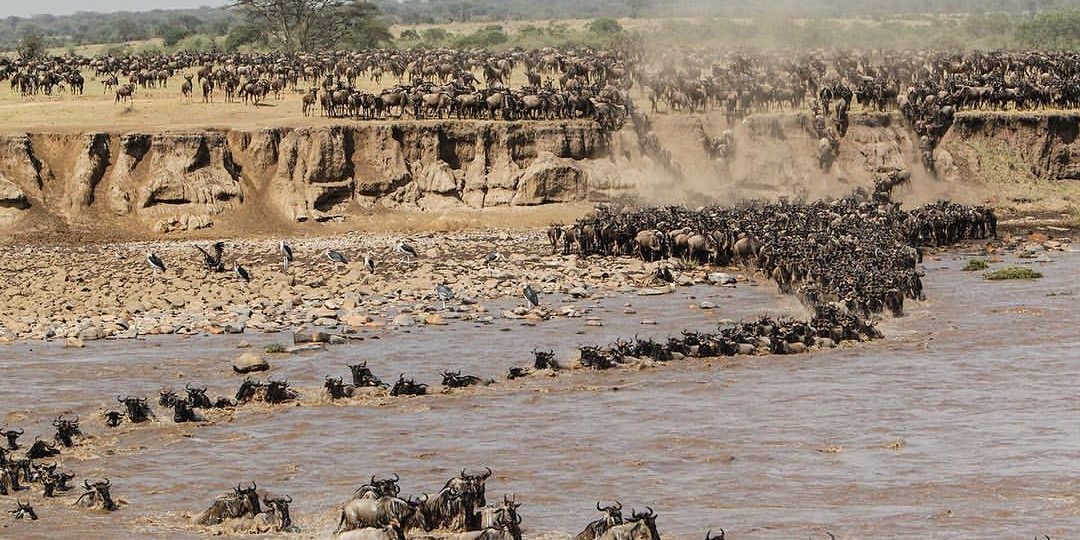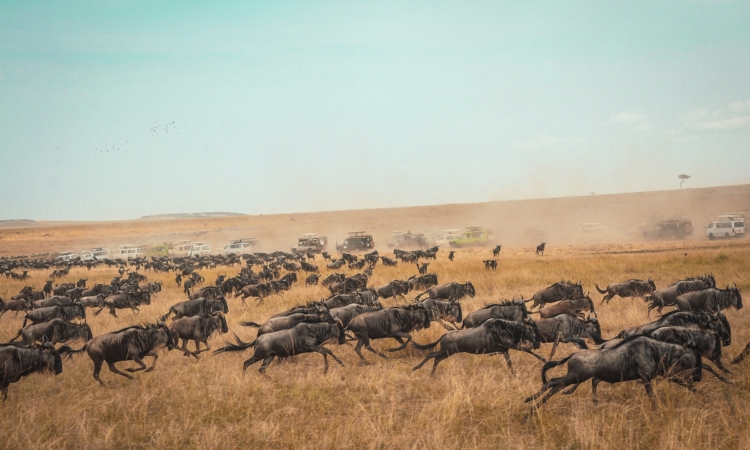Wildebeests also known as gnus are a species of antelopes found in East and South Africa. They are subdivided into two species of blue wildebeests and black wildebeests. Although all wildebeests migrate, the famous wildebeest’s migration which attracts millions of tourists annually happens in Serengeti national park in Tanzania and Masai Mara game reserve in Kenya. The spectacular event is one of the seven natural wonders in Africa.
Wildebeests can weigh up to 270 kilograms and with a height of 2.4 meters tall.

Why do wildebeests migrate?
The wildebeest’s migration is an annual event that takes place in Serengeti national park in Tanzania and Masai Mara game reserve in Kenya. This involves over 1.5 million wildebeests, 400000 zebras, 200000 Thompson’s gazelles and other antelopes embarking on an 800 to 1000 kilometre journey overcoming various obstacles along the way.
After calving seasons from December to February from southern Serengeti and Ndutu plains, they will need fresh nutritious grass and sufficient water to strengthen their young calves. They move through central Serengeti to the western corridor crossing Grumeti and Mara rivers before entering Masai Mara game reserve.
The exact reason for the great wildebeest migration is unknown however, scientists and researchers have come up with some suggestions afters years of studying migration herds and came up with some conclusions of why wildebeests migrate and these can be seen and explained below.
Water and pasture
Migration herds movement is driven by the continuous need of fresh pasture and water. Hence the animals follow rains through their instincts of detecting lightning and thunder from a far. The wildebeest’s migration movement every year will highly depend on the rainfall patterns.
The predictable rainy and dry seasons in Serengeti national park and Masai Mara game reserve. Plus wildebeests using the same migration route for hundreds of years. It has made it easy for travellers to know which place to visit. What time of the year to visit however though the months for river crossings are predictable. The exact time of the day when the river crossings take place is unpredictable.
It’s not only wildebeests that participate during the migration. But they make up to 60% of the migration herds, zebras, gazelles, elands and other antelopes join the spectacular event while predators like lions, leopards, hyenas and cheetahs hunt on the plains, numerous crocodiles also hunt during the river crossings. Wildebeests and zebras graze together because they consume different parts of the same grass. Zebras have good vision while wildebeests have strong sense of smell and hearing hence both defend themselves from predators.
Plan for the great wildebeest migration by contacting our migration safari companies or inquire with us below to plan for your safari tour with us.









